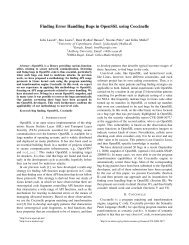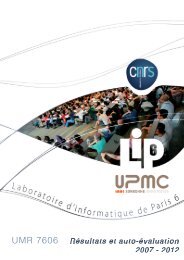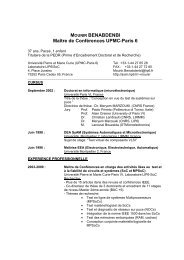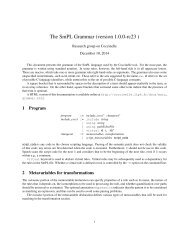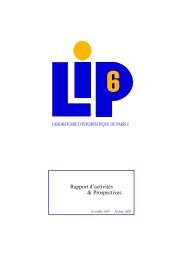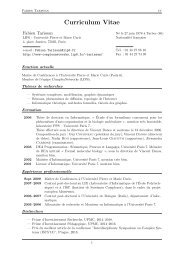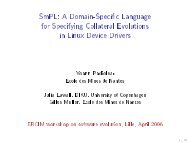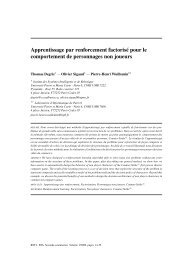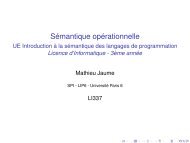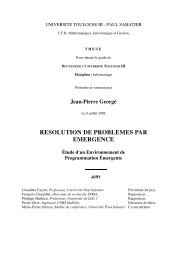Proceedings [PDF] - Measurement and Analysis of P2P Activity ...
Proceedings [PDF] - Measurement and Analysis of P2P Activity ...
Proceedings [PDF] - Measurement and Analysis of P2P Activity ...
You also want an ePaper? Increase the reach of your titles
YUMPU automatically turns print PDFs into web optimized ePapers that Google loves.
International Conference Advances in the <strong>Analysis</strong> <strong>of</strong> Online Paedophile <strong>Activity</strong> Paris, France; 2-3 June, 2009<br />
Internet Child Abuse: Underst<strong>and</strong>ing Offender<br />
Online Grooming Behaviour<br />
Pr<strong>of</strong>essor Julia Davidson, PhD(ECON)<br />
Director <strong>of</strong> Research in Criminology,<br />
Co-Director Centre for Abuse & Trauma Studies<br />
(Kingston University & Royal Holloway, University <strong>of</strong> London)<br />
Paper prepared for : ‘Advances in the <strong>Analysis</strong> <strong>of</strong> Online Paedophile<br />
<strong>Activity</strong>’ Paris, France 2009, June, 2 - 3<br />
Young People’s use <strong>of</strong> the Internet<br />
Internet use has grown considerably in the last decade. Information<br />
technology now forms a core part <strong>of</strong> the formal education system in many<br />
countries, ensuring that each new generation <strong>of</strong> Internet users is more adept<br />
than the last. Research studies in the UK suggest that the majority <strong>of</strong> young<br />
people aged 9-19 accessed the Internet at least once a day. The Internet<br />
provides the opportunity to interact with friends on social networking sites<br />
such as MySpace, Facebook <strong>and</strong> Bebo <strong>and</strong> enables young people to access<br />
information in a way that previous generations would not have thought<br />
possible. The medium also allows users to post detailed personal information,<br />
which may be accessed by any site visitor <strong>and</strong> provides a platform for peer<br />
communication hitherto unknown. The majority <strong>of</strong> children (65%) in Davidson<br />
<strong>and</strong> Martellozzo's (2005) study had access to at least one computer at home,<br />
49% had computers in their bedrooms. Other children did not have a<br />
computer at home, but had access to a computer at relatives' or friends'<br />
houses, 15% used Internet cafés on a regular basis (more than once a week).<br />
The findings suggest that almost all <strong>of</strong> the children had access to the Internet<br />
outside school. 60% accessed the Internet more than four times per week,<br />
this was particularly the case for the 12 to 14 age group. Of those children<br />
accessing the Internet, 76% were largely unsupervised <strong>and</strong> spent long<br />
39


![Proceedings [PDF] - Measurement and Analysis of P2P Activity ...](https://img.yumpu.com/32964521/39/500x640/proceedings-pdf-measurement-and-analysis-of-p2p-activity-.jpg)

